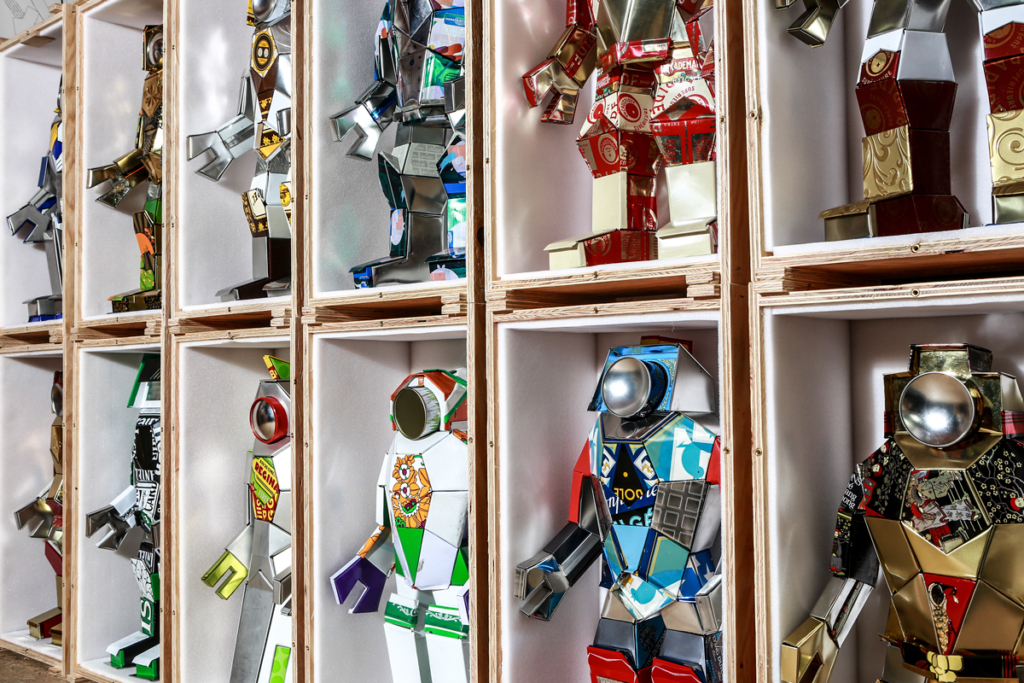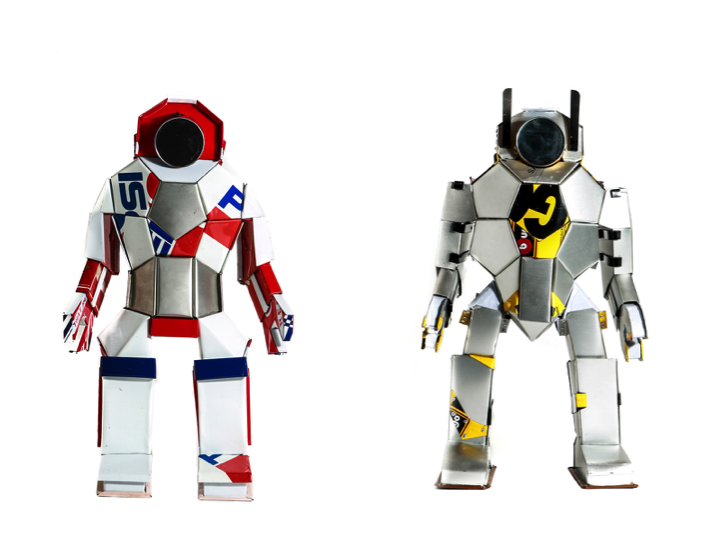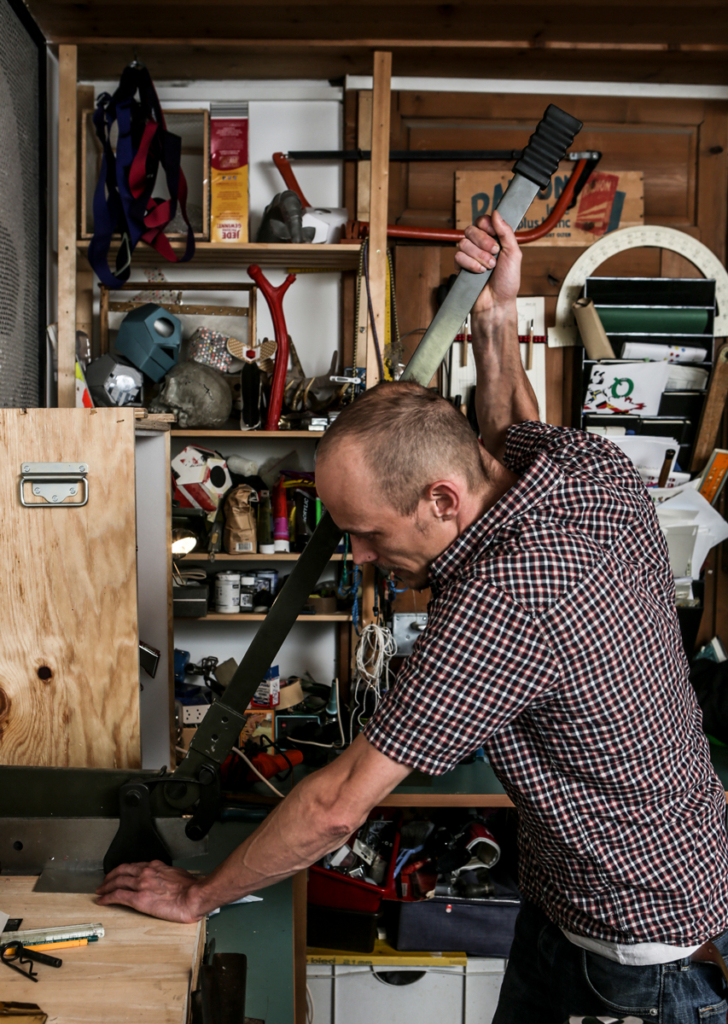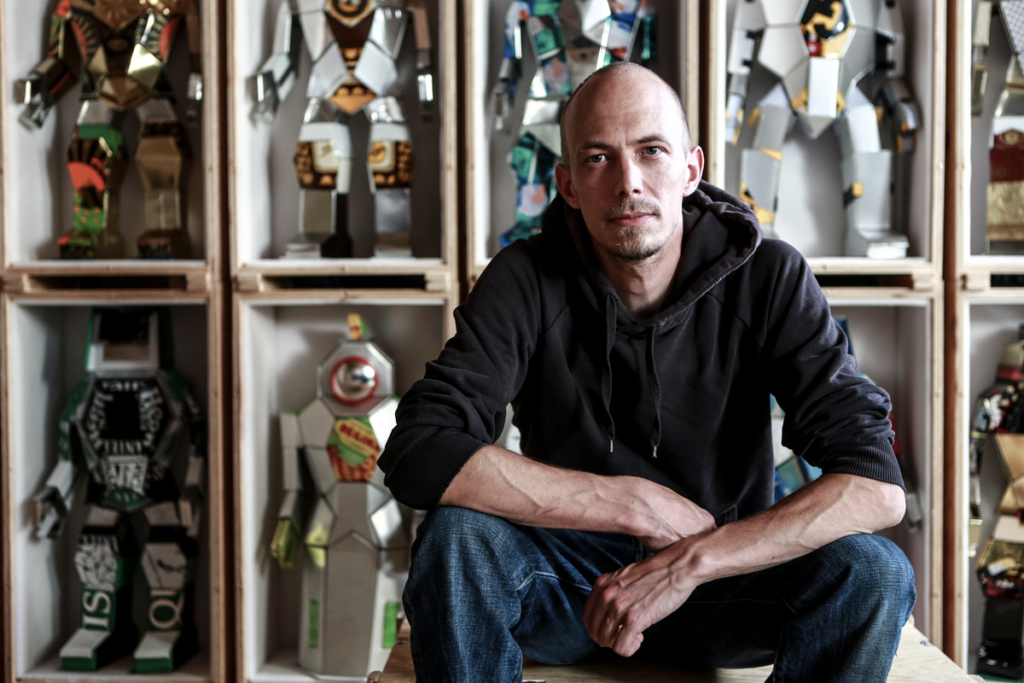Following “Viva la Robolución!” by +Brauer, the MB&F M.A.D.Gallery proudly presents another exceptional exhibit of robotic sculptures representing the very epitome of cool: virtuoso Hervé Stadelmann merges his gifted ability to work with his hands as a tinsmith with a keen eye for graphic design.
The sculptures
One evening in November of 2014, I was in the middle of making small metal skulls using the least possible parts and I got tired of it,” Stadelmann explains how the idea for the robot figures got underway. “So I told myself that I would start a sculpture of something abstract without knowing where I was going. It was only a moment before the abstract sculpture began to look like a robot and I thought, ‘yes, good idea’.”

It didn’t take long before this caught on locally, and Stadelmann realized that this was something he could develop.
No two of his robots are alike. Every meticulous fold of metal undergoes careful consideration of placement to highlight the patterned, colourful, or monochromatic materials in an artistic way. Concurrently, this generates unique traits for each robot. For example, one may have antennae or what appears to be a classically Egyptian-style headdress, while others might be set apart with vibrant colour patterns flaunted across the chest or a monochromatic copper tone. Stadelmann’s constructions also bring new life to familiar materials such as Pepsi and Heineken service trays. He manipulates the metal into what appear to be folds combining them to form unique robot sculptures.

Although immobile, the robotic sculptures make powerful visual impressions thanks to both their individual characteristics and their sizable dimensions. Standing at an average of 70 centimetres tall – slightly more than two feet – the robots quickly become the focal point of any space and are sure to provoke interesting conversations. Even though Stadelmann’s sculptures are not toys, they do appeal to the inner child in everyone, making them a perfect fit for the MB&F M.A.D.Gallery. Stadelmann has crafted an army of 16 individually numbered robot sculptures; the appearance of each varies greatly from one to the other, and unmistakable personalities are easily discerned.
The process
Stadelmann creates his fleet of robot sculptures entirely by hand in his studio in La Chaux-de-Fonds, Switzerland, the heart of watchmaking country. Assembling one sculpture resulting in a robot with an average height of 70 centimetres and width of 40 centimetres requires two square metres of sheet metal and about 80 hours of painstaking work.

My inspiration is guided by the graphics, typography, and textures on the sheets of metal I find. The main point is to find a sheet metal plate that inspires me. As soon as I have that, work can begin,” the Swiss creator born in the groovy 1970s explains.
The metal sheets used to create the robot sculptures are often discovered on Stadelmann’s countless journeys to flea markets or may even be found discarded in the streets. He often repurposes materials from tea boxes, cookie tins, branded service trays, and traffic signs in metals ranging from copper and stainless steel to tin, aluminium, and zinc. “I almost only use repurposed materials that are of diverse thicknesses,” the studied graphic artist explains.
The most difficult step in completing the robot sculpture is the interior assembly: if the pieces are not precise enough, it does not work. Adding to the difficulty level, all the materials vary in thickness and strength, which then requires each robot sculpture to have its own individual set of blueprints.
Sixteen robots are currently on display at the MB&F M.A.D.Gallery Geneva.

